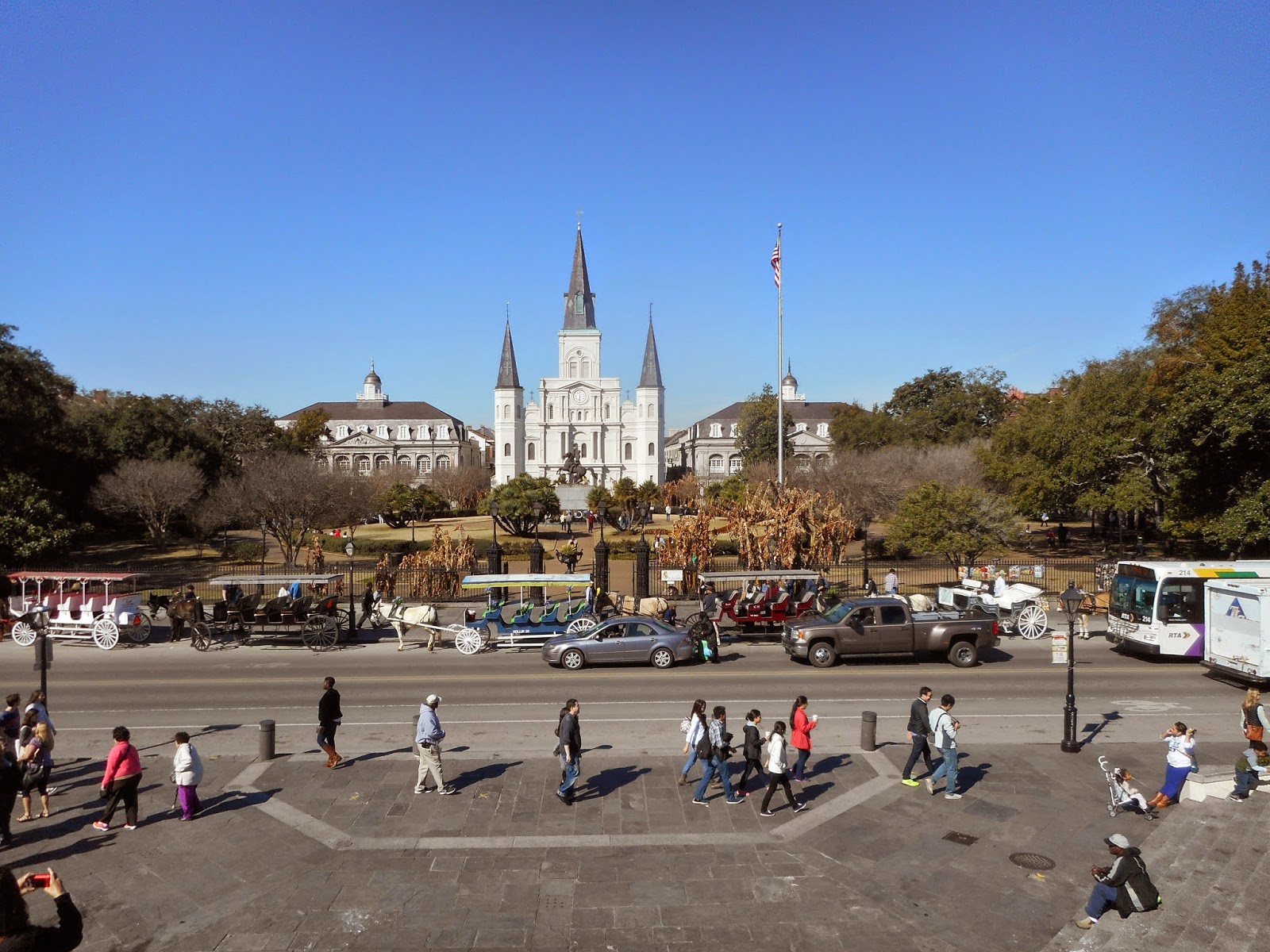We are making our way through Texas and have been taking in the history of the San Antonio Missions. The missions were built along the San Antonio River in the 1700s as the Spanish attempted to colonize the area in order to maintain their claims to the land. The missions were small communities where the Franciscan Friars brought in the local Indians and trained them to be loyal Spanish citizens. The Indians where taught the Catholic faith as well as farming, ranching, and vocational skills.
The Indians who built the missions, came from several tribes of hunters and gatherers in the area. They were collectively known as Coahuiltecans. They were pretty willing recruits, as they were being wiped out by more powerful tribes from the North, mainly the Apaches, as well as being decimated by diseases introduced by the Spanish. So, in order to survive, they gave up their way of life and became loyal, obedient Spanish citizens.
The San Jose Mission was founded in 1720 and was know as the largest of the missions. The church was completed in 1782
 |
| The San Jose Church. |
 |
| Inside the San Jose Church. |
 |
| A room in the Convento. |
 |
| The Rose Window. |
 |
| The Indian apartments were along the walls. |
 |
| The remains of the Convento. |
 |
| The stone work was a way to help teach the concepts of Christianity. |
 |
| Side view of the San Jose Church. |
The Mission San Juan was moved to the present location in 1731. It was a very productive mission and by 1762 it had sheep and cattle herds that numbered 3500 each. In 1756 the church was finished.
 |
| San Juan Church. |
 |
| Inside the San Juan Church. |
 |
| Remains of the mission |
 |
| San Juan Mission. |
The Mission Espada was founded in 1690 and then relocated to the present location in 1731. It is the oldest of the Texas missions. The church was completed in 1756.
 |
| Espada Mission Church. |
 |
| Bell Tower |
 |
| Remains of the Indian quarters of Espada mission. |
The Mission Concepcion is the most intact of the Texas missions. It was relocated from East Texas in 1731. The church was finished in 1755.
 |
| Concepcion Church |
 |
| Remains of a kitchen. |
 |
| Fresco were used both inside and outside of the mission buildings. Paints contained limestone and goat's milk and was applied to wet lime plaster. |
 |
| Fresco |
 |
| Inside the Concepcion Church. |
 |
| Fresco on the ceiling. |
 |
| Four colors were used in the churches: Yellow from hydrated ferric oxide, red from iron oxide, black from carbon, and blue from indigo. |
 |
| Another view of the church. |
The Missions and the accompanying farms were supplied with water through an elaborate irrigation system. Seven acequias or ditches, five dams and several aqueducts where built. The 15 miles of irrigation system supplied water to 3500 acres of land.
 |
| Top of the Espada Aquueduct. |
 |
| Espada Aquaduct. |
 |
| Aquaduct |
 |
| Acequia |




























































